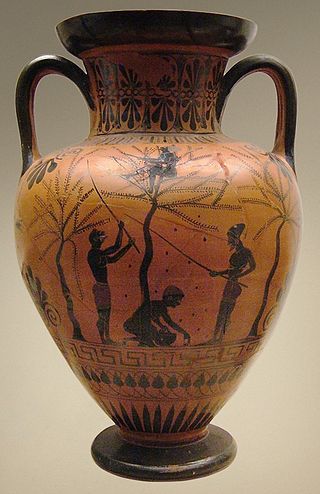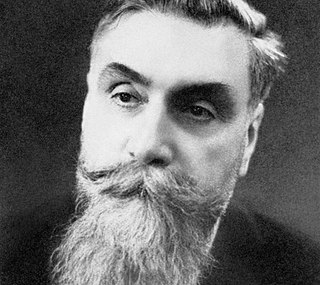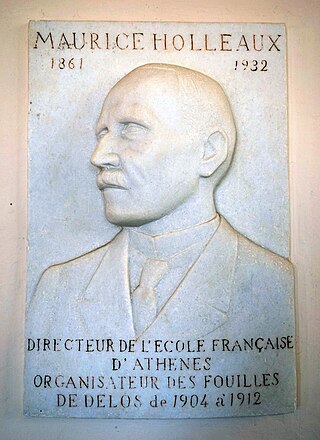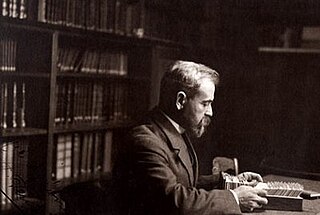
The 14th century BC was the century that lasted from the year 1400 BC until 1301 BC.
Jacques Lacarrière was a French writer, born in Limoges. He studied moral philosophy, classical literature, and Hindu philosophy and literature. Professionally, he was known as a prominent critic, journalist, and essayist.
Pierre Emmanuel Vidal-Naquet was a French historian who began teaching at the École des hautes études en sciences sociales (EHESS) in 1969.
Aleksandra Dunin-Wąsowicz was a Polish archaeologist at the Institute of Archaeology and Ethnology of the Polish Academy of Sciences. She has published studies, primarily in French, of the development of technology in Ancient Greece, and edited archeological maps of the area.

Agriculture was the foundation of the Ancient Greek economy. Nearly 80% of the population was involved in this activity.

Jean-Pierre Vernant was a French historian and anthropologist, specialist in ancient Greece. Influenced by Claude Lévi-Strauss, Vernant developed a structuralist approach to Greek myth, tragedy, and society which would itself be influential among classical scholars. He was an honorary professor at the Collège de France.

The Poitevin or Poitou is a French breed of draft horse. It is named for its area of origin, the former province of Poitou in west-central France, now a part of the region of Nouvelle-Aquitaine. It was formed in the seventeenth century when horses of Flemish or Dutch origin, brought to the area by engineers working to drain the Marais Poitevin, interbred with local horses. Although it has the size and conformation of a draft horse, the Poitevin has never been bred for draft abilities, and has been little used for draft work. Its principal traditional use was the production of mules. Poitevin mares were put to jacks of the large Baudet du Poitou breed of donkey; the resulting Poitevin mules were in demand for agricultural and other work in many parts of the world, including Russia and the United States. In the early twentieth century there were some 50,000 brood mares producing between 18,000 and 20,000 mules per year.

The Greek community in France numbers around between 35,000 - 50,000 people. They are located all around the country but the main communities are located in Paris, Marseille and Grenoble.
Claude Calame is a Swiss writer on Greek mythology and the structure of mythic narrative from the perspective of a Hellenist trained in semiotics and ethnology (ethnopoetics) as well as philology. He was a professor of Greek language and literature at the University of Lausanne and is now Director of Studies at the School for Advanced Studies in the Social Sciences, in Paris. He taught also at the Universities of Urbino and Siena in Italy, and at Yale University in the US.

Abel Rey was a French philosopher and historian of science.
Claude Mossé was a French historian specializing in the history of Ancient Greece.

Léon-Maxime Collignon was a French archaeologist who specialized in ancient Greek art and architecture.
Michel Debidour is a French historian and archaeologist.
Roland Martin was a French archaeologist.
Claude Rolley was a French archaeologist, emeritus at the University of Burgundy, writer on art, archaeology of Greece and Gaule.
Pierre Lévêque was a 20th-century French historian of ancient and Hellenistic Greece.

Maurice Holleaux was a 19th–20th-century French historian, archaeologist and epigrapher, a specialist of Ancient Greece.

Hubert Octave Pernot was a French linguist, specializing in Modern Greek studies.
Roland Étienne is a French archaeologist and historian specialising in the history of Greek archaeology, ancient architecture and Hellenistic history.
Marie-Françoise Baslez was a French historian and academic. She specialized in Hellenistic Judaism and primitive Christianity and the persecution faced by the two religious groups.









